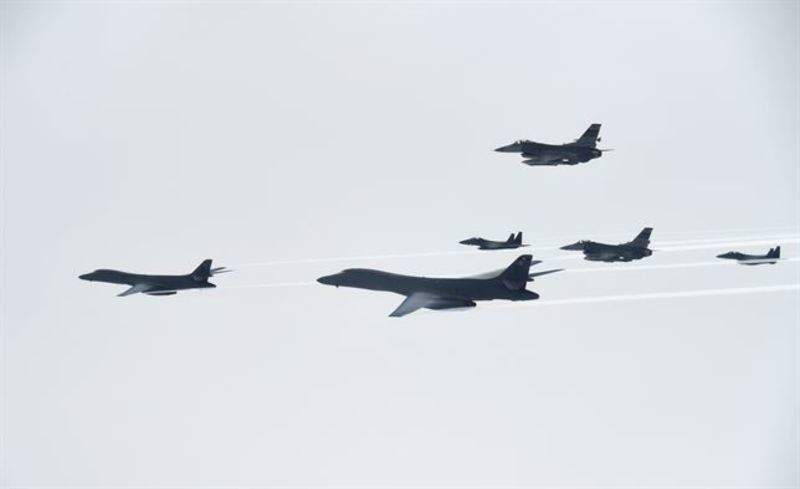

The US Air Force (USAF) has flown two B-1B Lancer bombers in response to North Korean provocations, including a launch of an intercontinental ballistic missile (ICBM) on 3 July.
Its B-1Bs from Andersen Air Force Base in Guam conducted a ten-hour sequenced bilateral mission with South Korean and Japanese fighter jets.

Discover B2B Marketing That Performs
Combine business intelligence and editorial excellence to reach engaged professionals across 36 leading media platforms.
The mission witnessed participation from South Korean F-15 fighter jets and USAF F-16 fighter jets.
The bombers practiced attack capabilities by releasing inert weapons at the Pilsung Range.
US Forces Korea deputy commander lieutenant general Thomas Bergeson said: “US bombers and Republic of Korea fighters are just two of many lethal military options at our disposal.
“This mission clearly demonstrates the US-ROK alliance remains prepared to use the full range of capabilities to defend and to preserve the security of the Korean Peninsula and region.”

US Tariffs are shifting - will you react or anticipate?
Don’t let policy changes catch you off guard. Stay proactive with real-time data and expert analysis.
By GlobalDataDuring the return flight to Guam, the B-1Bs were joined by Japan Air Self-Defense Force F-2 fighter jets over the East China Sea.
US Forces Japan commander lieutenant general Jerry P Martinez said: “The US-Japan alliance and the relationship between our militaries are stronger than they have ever been.
“We continue to train with our Japanese allies to ensure we are ready to defend ourselves from attack.”
The US Pacific Command is responsible for maintaining flexible bomber and jet fighter capabilities in the Indo-Asia-Pacific theatre.
It is capable of quickly responding to any regional threat in order to defend the US homeland and in support of allies.
Image: The USAF B-1B Lancers fly with South Korean F-15 and the USAF F-16 fighter jets over the Korean Peninsula. Photo: courtesy of Republic of Korea Air Force.





